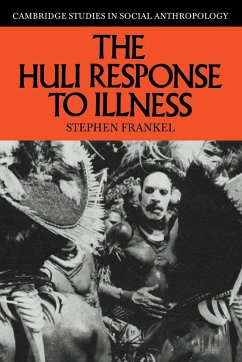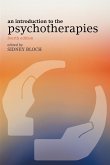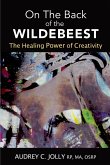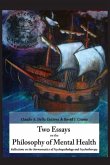This study of the rapid transformation of traditional medical care among the Huli of New Guinea by Western treatments strikingly combines the methods of social anthropology and epidemiology.
Dr Frankel's study of the rapid transformation of traditional medical care among the Huli of New Guinea by Western treatments strikingly combines the methods of social anthropology and epidemiology. Until the 1950s the Huli used only their own form of therapy, including symptomatic treatments, specialist surgery and major ritual intended to enlist the support of spirits. Since then, superficially at least, there has been a rejection of many traditional measures and a corresponding enthusiasm for Western treatments underpinned by Christianity. The Huli Response to Illness analyses the rich network of traditional belief relating to the classification and causation of illness, patterns of disease, historical experience, and the organisation of society. The methodological approach presented is notable not only for the study of medical pluralism, but also for examining the conditions which may influence responses to programmes of health improvement. The study as a whole integrates material conventionally divided between anthropological and medical texts and powerfully demonstrates the limitations of this traditional separation.
Table of content:
List of figures; List of tables; Glossary and note on orthography; Preface; 1. Introduction; 2. Historical perspectives; 3. Huli society; 4. Ideas of health and illness; 5. Morbidity, explanations and actions: quantitative perspectives; 6. Illness attributed to proximate causes; 7. Explanations relating to sexuality and growth; 8. Illness grounded in social relations; 9. Spirits and God; 10. Patterns of response; References; Index.
Hinweis: Dieser Artikel kann nur an eine deutsche Lieferadresse ausgeliefert werden.
Dr Frankel's study of the rapid transformation of traditional medical care among the Huli of New Guinea by Western treatments strikingly combines the methods of social anthropology and epidemiology. Until the 1950s the Huli used only their own form of therapy, including symptomatic treatments, specialist surgery and major ritual intended to enlist the support of spirits. Since then, superficially at least, there has been a rejection of many traditional measures and a corresponding enthusiasm for Western treatments underpinned by Christianity. The Huli Response to Illness analyses the rich network of traditional belief relating to the classification and causation of illness, patterns of disease, historical experience, and the organisation of society. The methodological approach presented is notable not only for the study of medical pluralism, but also for examining the conditions which may influence responses to programmes of health improvement. The study as a whole integrates material conventionally divided between anthropological and medical texts and powerfully demonstrates the limitations of this traditional separation.
Table of content:
List of figures; List of tables; Glossary and note on orthography; Preface; 1. Introduction; 2. Historical perspectives; 3. Huli society; 4. Ideas of health and illness; 5. Morbidity, explanations and actions: quantitative perspectives; 6. Illness attributed to proximate causes; 7. Explanations relating to sexuality and growth; 8. Illness grounded in social relations; 9. Spirits and God; 10. Patterns of response; References; Index.
Hinweis: Dieser Artikel kann nur an eine deutsche Lieferadresse ausgeliefert werden.








